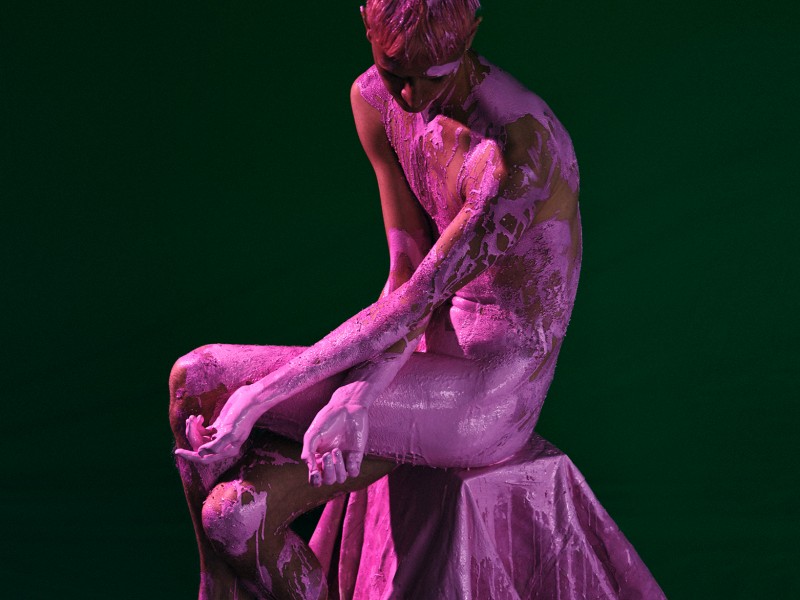Cadogan Square, in London’s well-heeled Knightsbridge, is an area with some pedigree. Children play in its gated, blossom-filled gardens, while ubiquitous Sloane Rangers prowl the surrounding streets, driving the kind of oversized SUVs which have been dubbed ‘Chelsea Tractors’. This is an exclusive part of town, and money talks.
The square is home to Christian Levett, the former hedge fund manager turned art collector, whose notable wealth has helped amass one of the world’s largest private collections. His vast apartment, a mini gallery in itself, is in the process of being dismantled ahead of a move abroad. This is disappointing as I had heard the walls were lined with Tracey Emin tapestries, an original Damien Hirst ‘Spot’ painting, plus a impressive array of modern masterpieces. Even with the bare spaces, it’s clearly the environment of a man who has done well for himself. The investor reveals they were purchased at a good price. The collector in him just likes them. Reclining on a Hermes blanket-covered sofa, he admits to having too much “stuff”.
This surplus ‘stuff,’ for want of a better term, will be stored with the rest of his collection in temperature-controlled buildings. Some will make the move to Italy. But the most relevant pieces might find their way to his very own museum - MACM - situated in the charming Medieval village of Mougins on France’s sun-dappled Cotes D’Azur. It's a museum quite unlike any other - part superlative collection of antiquities, part showcase to a world of matching modern art. Amongst precious Egyptian artefacts, including a jaw-dropping gilded sarcophagus, and an impressive collection of Greek battle armour and Roman statues, there is much to surprise and delight here. Curiously, Levett has found a way to juxtapose the ancient and contemporary. The two dovetail surprisingly well.
“I came to the conclusion that it might be a good idea to open a museum and get everything out of storage,” he recounts. “I wanted to expand the conversation between art from the Baroque period through to contemporary, and look for artworks that have been clearly classically inspired. Not because people might be interested in seeing the link, I thought it would simply appeal to those who just like art.”
He presumed it would be difficult to find pieces that complimented the antiquities. “In fact it was pretty easy,” he grins. “I ended up buying Modigliani drawings of Caryatid. I was able to purchase a drawing of the Venus de Milo by Cezanne, a drawing of Caracalla by Matisse, and one of a classical sculpture wearing a hat by Scheile. I mean, would have thought of that?”
This unlikely fusion spans centuries and leapfrogs over perceived notions of rigid classicism. Where in the world would you find a Grayson Perry urn next to its ancient predecessor? “We also have a Keith Haring vase in terracotta, covered in black stick men. Unless you know Keith Haring's work in absolute intimacy, who the hell would have thought he produced Greek-inspired vases? Then I found a photograph by Man Ray of an ancient Greek Corinthian helmet. Some of the connections are so far-fetched. And even more amazing is the link to Mougins.”
There’s something about Mougins that has long attracted artists. “Picasso spent the last twelve years of his life there, as did Jean Cocteau and Fernand Léger,” says Levett, who has a house nearby himself. “Even though it has an incredible art history, it’s a living, functioning village, and while it gets a regular flow of tourists, it’s not overwhelmed with them. Cannes is fifteen minute drive away, and if we want to go up the coast to St Tropez, we just hire a boat and a captain and sail off to have lunch.”
He appears to live a charmed life but Levett strikes me as a level-headed chap who can balance the two sides of his brain. He is fanatical but highly ethical; cautious but impulsive too. It’s all a long way from his modest background - a significant leap from south east Essex to the spoils of south west France. “Everything I do these days is a massive divorce from my childhood,” he muses. “I had a regular working class upbringing, but then by my early twenties I started to earn fairly significant amounts of money, so things changed quite rapidly. The biggest shock for me was moving to Paris when I was 25 and living in a Haussmann building in St Germain. I was working for a company trading commodities by day, but at the weekend I went into this process of self-education in art. Over the course of the next 18 months I spent every Saturday and Sunday walking around the Louvre and Musee D’Orsay, educating myself in early 17th century Dutch and Flemish Masters. It was a revelation.”
We talk about Leonardo da Vinci and the fact that Levett is something of a Renaissance man himself. “Well, I have a pretty good sense of the value of something, and maybe that's from having a father who was a bookmaker. I spent a lot of time on racecourses and dog tracks, so I grew up seeing the futility of gambling. You spend your whole life thinking about probabilities. I was doing that from the age of three and haven't really stopped.”
If the definition of a Renaissance man is a polymath with unquenchable curiosity then Levett has it in spades. “I certainly do with artworks,” he smiles, “and I had it with selling commodities as well. They're completely different things, but there’s an investment element to both. Curiosity is a motivating force.”
Perhaps the greatest attribute this refined character possesses is one not often found in the rich and successful: generosity of spirit. He talks about his latest acquisitions, of priceless art and dream properties, but there’s modesty hovering at surface level, and a philanthropic heart that beats harder than any auction hammer. He is effusive about the giants of art - figures like Anselm Kiefer and Georg Baselitz, but the highest accolades of the day are reserved for a relatively low-key Belgian painter named Johan Van Mullem. Levett has been pivotal in steering attention to the artist’s broad and powerful strokes and remains his greatest champion. A funded show at London’s Unit Gallery was the talk of the town, but he is keen to play down his role and let the work speak for itself. “It was an honour to be involved,” he says without bluster. “Great works of art don't need to be famous or expensive. If it’s something you believe in there’s a high chance that other people will love it too.”
For more information on current and upcoming exhibitions at MACM please www.mouginsmusee.com/en
Paul Tierney stayed at the Hotel Belles Rives in Juan-les-Pins, the former home of F.Scott and Zelda Fitzgerald. The hotel’s Art Deco lines and Riviera location would later inspire The Great Gatsby, while its Mediterranean jetty claims to be the spot where waterskiing was invented.
Related Features
-
460
-
-
-

